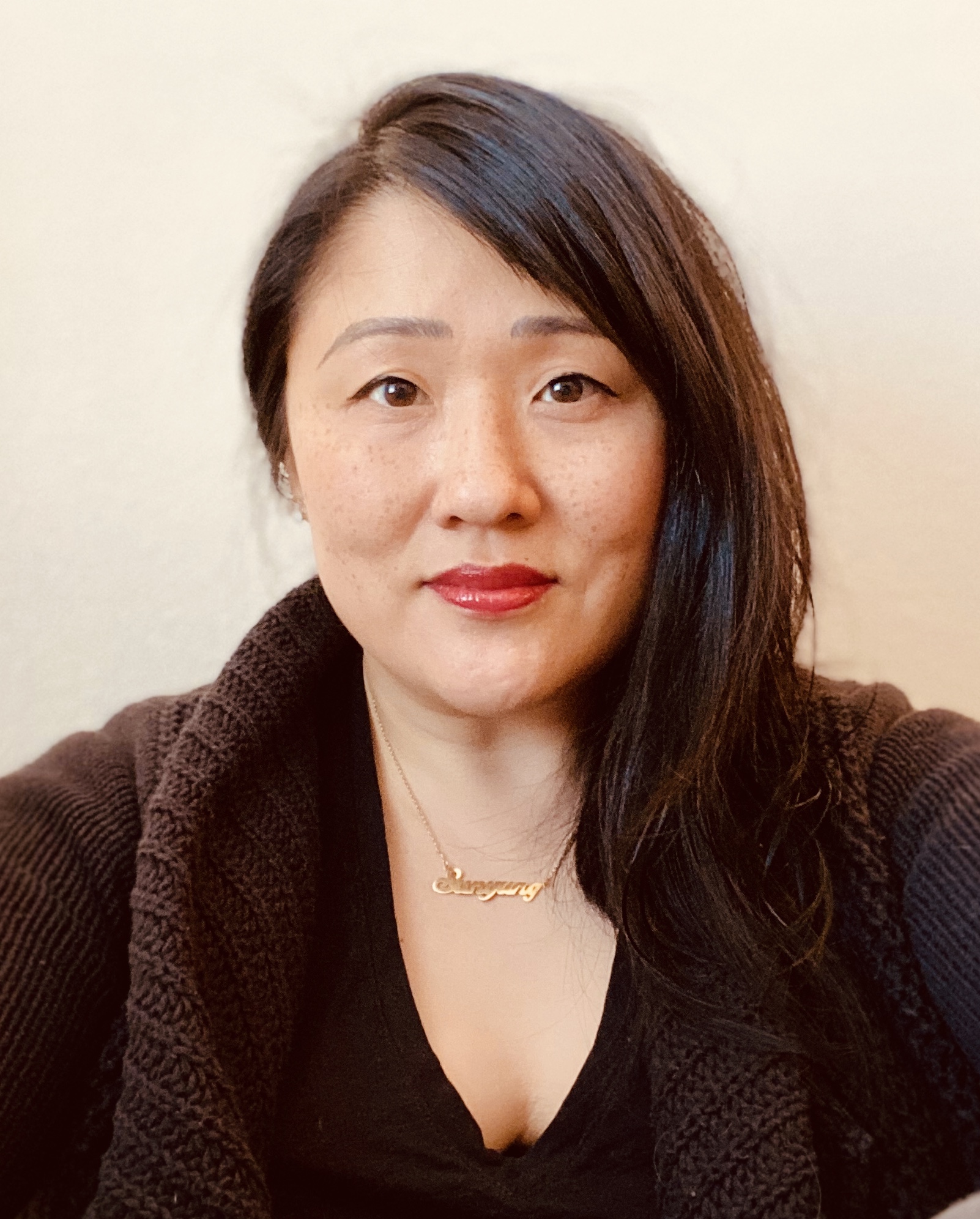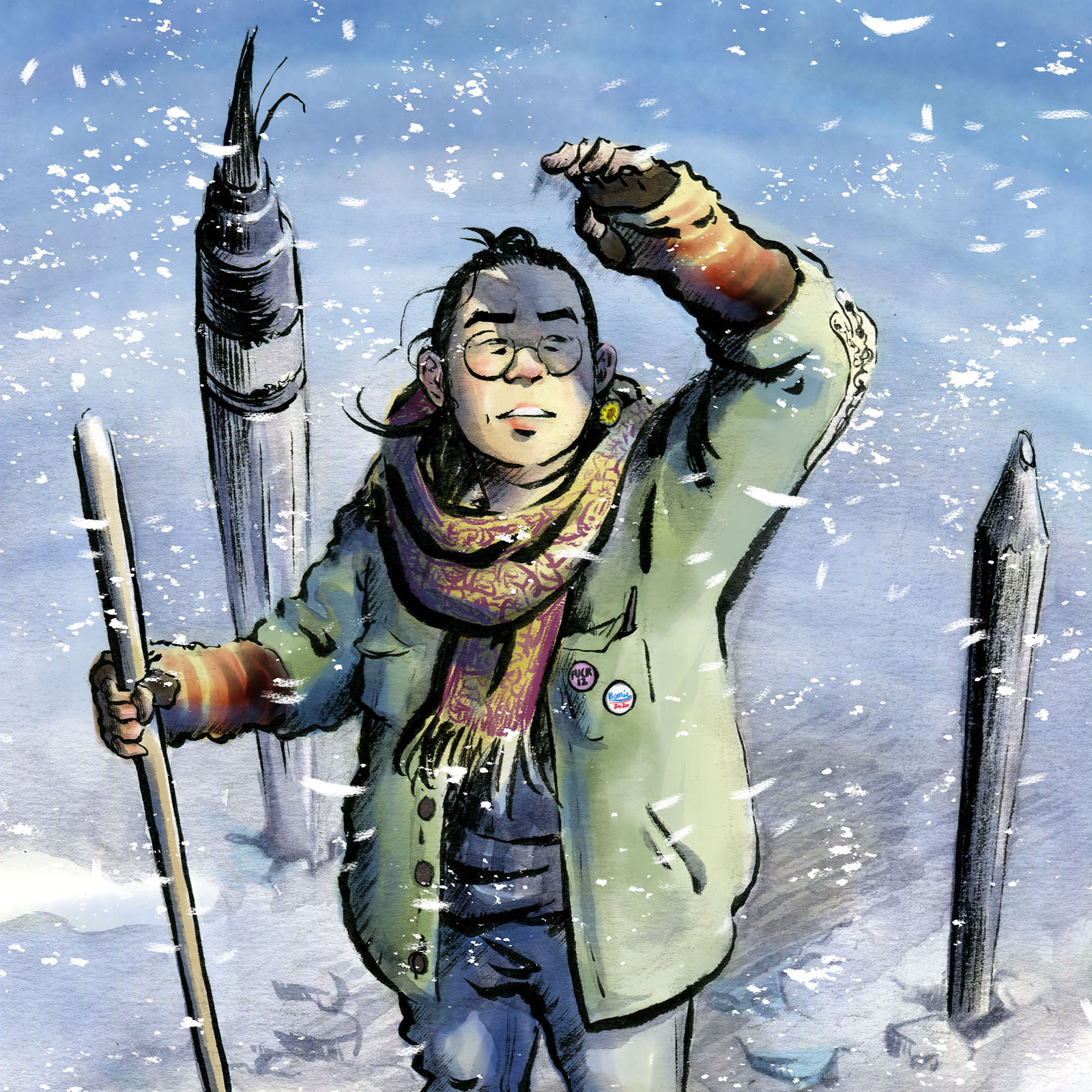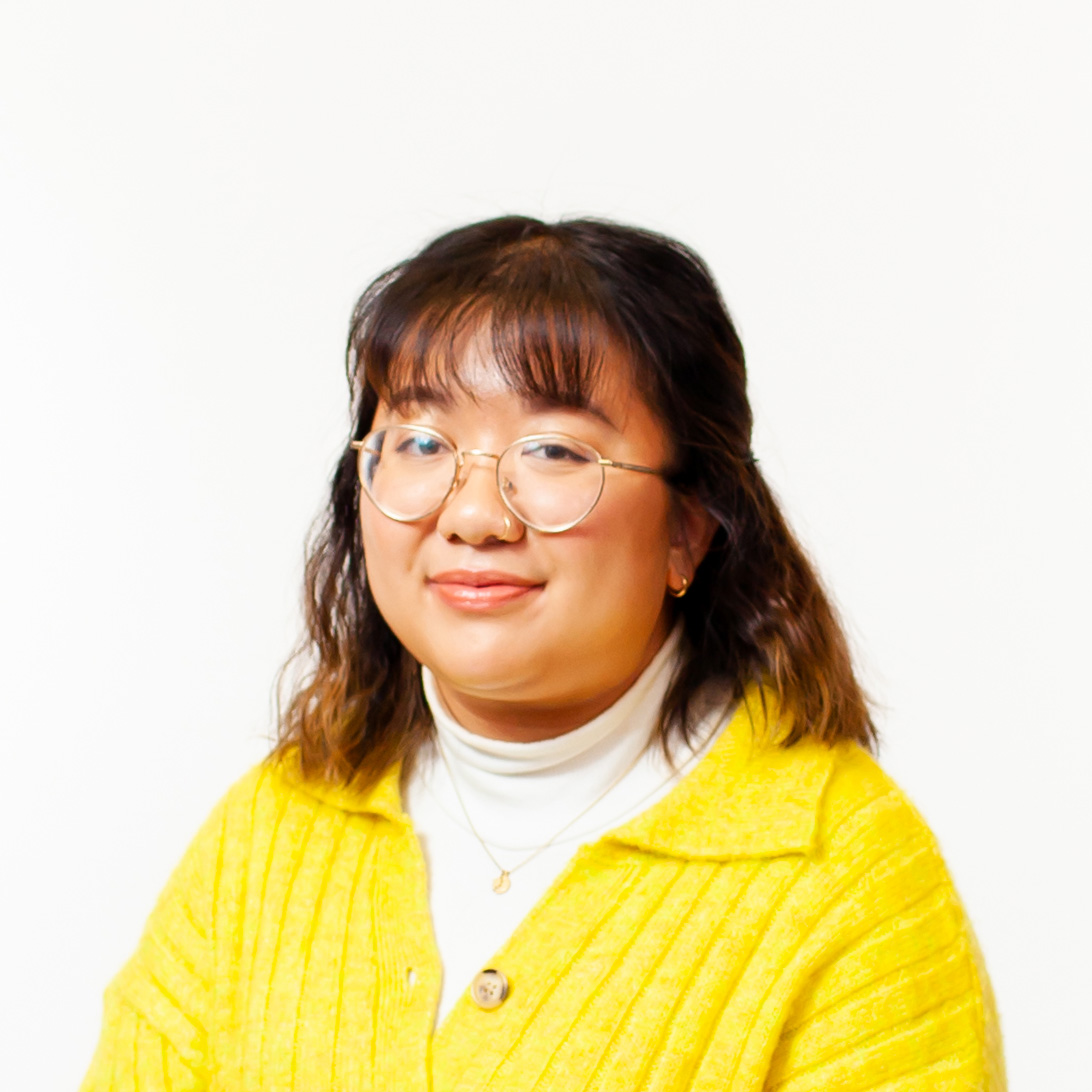A Story of Wholeness —
Part One: What is Lost
Story by Sun Yung Shin
Illustration by sunshine gao
Part I of a two-part series
Callie Chamberlain is a birth doula and a death doula, helping people navigate both the process that brings new life into the world, and the ways we pass beyond it. As one of Minnesota’s 15,000 Korean adoptees, she’s also had to navigate her own issues of rebirth, loss, and passing into new worlds.
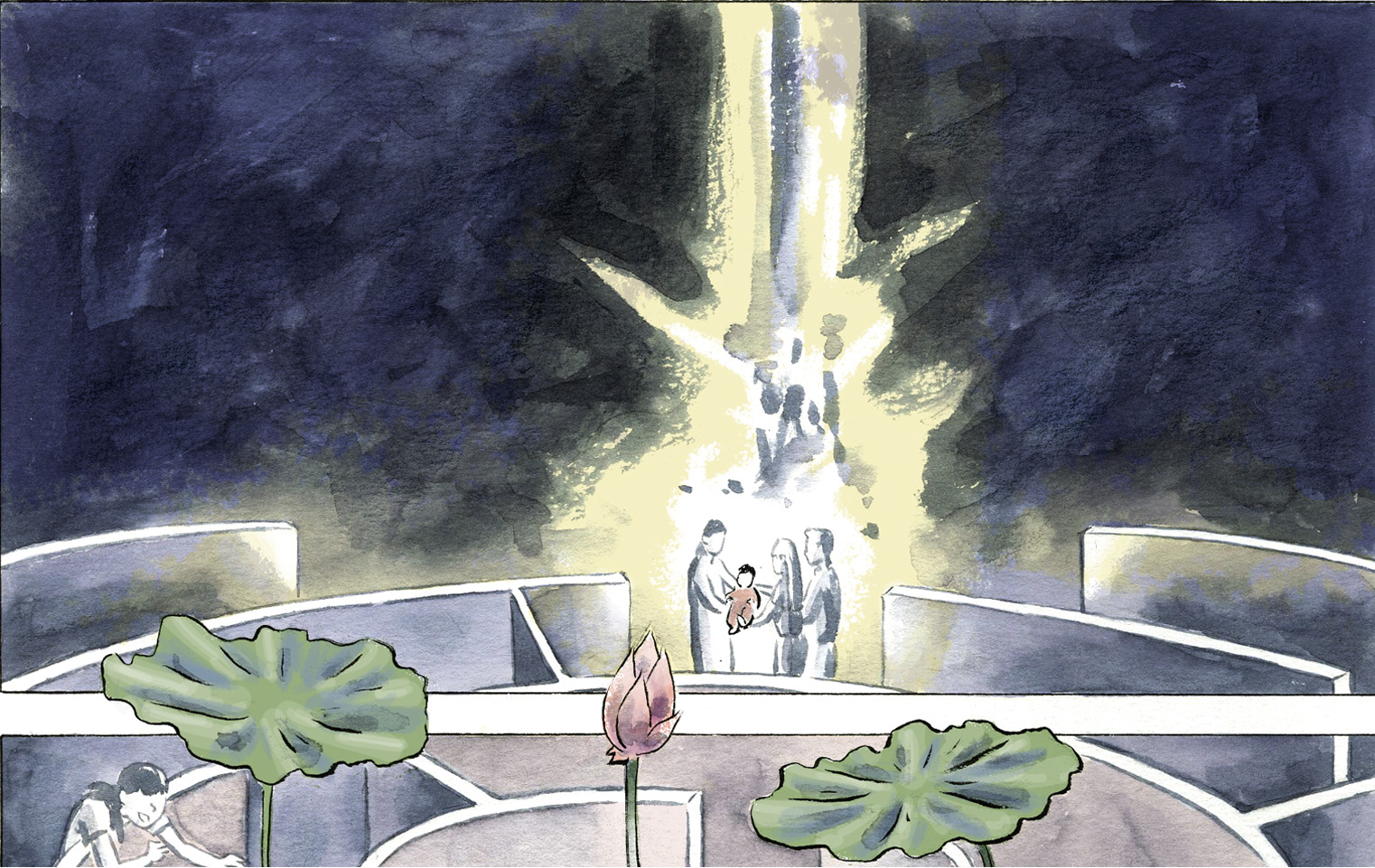
Most of the 200,000 Korean adoptees worldwide, and many adoptees generally, don’t know their full birth stories. Some may know partial stories, half truths, or in some cases, stories that are discovered later to contain significant fictions, as Callie did. So Callie set out to learn her story—and not just the story of her own adoption, but the story of how it shaped other parts of her life.
Not knowing what is truth and what is fiction compounds the loss and disorientation experienced as a result of separation by way of adoption.
Callie’s doula training helped her understand what both she and her birth mother may have lost in their separation, though what it revealed was difficult for her to face at first. “I began to understand the intensity of the bond between mother and child,” she says. “To understand how incredibly traumatic it is at every single level to be separated from your parents. To understand what that embeds into us and how it informs so much of who we are as adoptees.”
Adoptee loss is complex, and embodied.
The paradoxical challenge of healing from something many adoptees don’t consciously remember, in a cognitive sense, is often outside the realm of most Western therapeutic measures or the medical model of wellness.
“I had to shut off the computer at one point during my training because I was just sobbing and asking, Oh my god, how do I ever fix this?”
Adoption, especially transracial and transnational adoption, can be isolating on many levels. If healing means a restoration to some form of wholeness, then Callie’s path as a doula has brought her in touch with examples of embodied wholeness between birth parent and baby.
“The doula training process was so healing for me, so incredible. One of the affirmations that I give to my clients is, You and your baby are working together. You’re a team.” Even though at the time, Callie had not reunited with her birth mother, she felt her cooperative presence in an embodied way, “That was one of the things that I consistently came back to at the time, that even though I didn’t know my birth mother, we had this deep primal bond and had this experience together — I’m connected to her and I’m part of her. There’s something very beautiful about that. Something that transcends.”

Separation from their genetic-gestational-birth parent is only the first of two radical, traumatic transitions that mark adoptees’ lives. The second is their introduction and adaptation to being the child of their adoptive parent and family.
Adoption is often seen as an event, not an existential lifelong (and beyond) condition, and a charitable one that meets the needs of the child.
Regardless of the industry’s cultural framing of adoption in the U.S. the reality is that most adoptees are tasked with integrating into a family of strangers, and are expected by society to be unconditionally grateful, especially if they’re foreign-born people of color. Callie remembers, “the narrative of ‘you should just be grateful and you were saved,’ right? My parents never said that to me. But I somehow embedded that message into how I thought about myself from the beginning of time.”
Growing up in a white community with a white family, Callie had a lot of existential questions not uncommon to adoptees and other displaced people. “Who am I? How do I fit in? How do I deal with this loss and hatred within myself?” It’s natural that when surrounded by a culture in which your grief and questions are disenfranchised, it’s difficult to navigate your way through.
Transnational adoptees in the U.S. are generally expected to be loyal, grateful, and more or less assimilate without question. America’s myths of cultural superiority, along with white supremacist values embedded in every institution, have the effect of silencing many transnational adoptees of color when they are children. When it’s not safe or productive to ask questions, they become submerged, but don’t go away. Callie says that with her adopted family, she was surrounded by people who loved her, but felt isolated in her lived experiences.
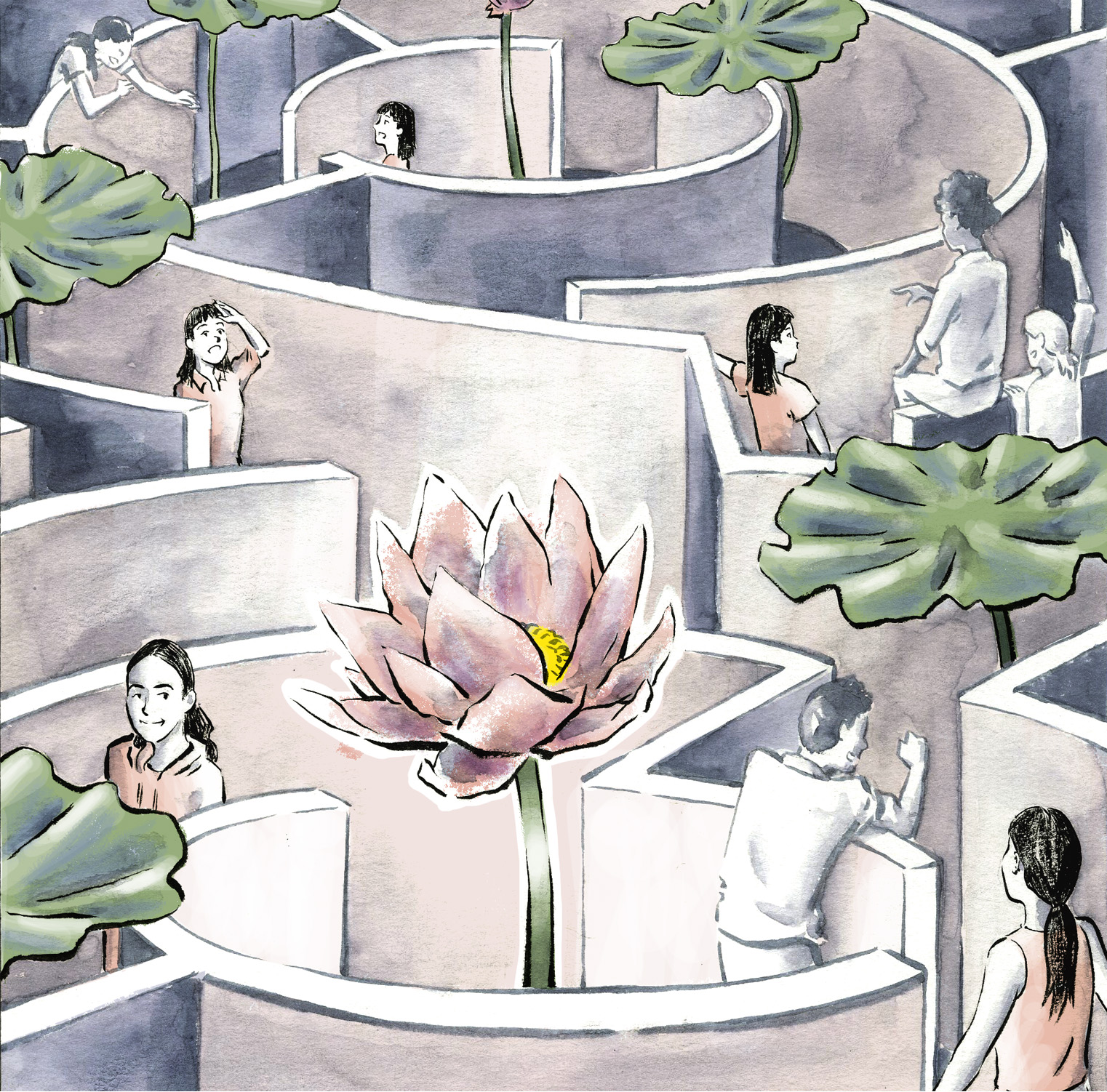
During the pandemic, she found that she wasn’t the only adoptee experiencing anguish and searching for answers. “I was in these virtual rooms for adoptees, and that kind of sparked something,” she says. “There’s a huge community of adoptees, and we would convene every week to talk about some of the things that we’re working through — how it showed up in our dating lives, how it showed up with our sense of worth and purpose.” She’s seen the conversation spread to other spaces, too. The Janchi Show podcast, hosted by Nathan Nowack, Patrick Armstrong, and K.J. Roelke, is “by, for, and about Korean adoptees,” and is one of several adoptee podcasts.
“I had really only thought about it on my own and had not really been wanting to move into these spaces,” Callie says. “All of a sudden I was around other adoptees who were talking about these issues. I felt a real sense of community. I’ve developed really deep relationships with people I’m in pretty constant communication with about our experiences.”
Thanks to decades of adoptee and ally activism and contributions to scholarship and public discourse, it’s become slightly more understood in the adoption industry that for the adoptee, adoption represents loss first, but there is a long way to go.

In reflections on loss and grief, mainstream American culture often focuses on “closure” and “moving on,” but for most, if not all adoptees, there is really no simple “moving on” from a fundamental loss such as family, identity, ancestors, homeland, language, culture.
In the 1970s, Dr. Pauline Boss, psychologist and now professor emerita of the University of Minnesota, coined the term “ambiguous loss.” Her concept that “human relationships are ruptured indefinitely by ambiguous loss, causing trauma and frozen grief,” has major implications for understanding the landscape, and challenges, of healing for adoptees.
Through her doula work, Callie has found spiritual meaning in the organic logic of communality rather than separation and endings.
“Birth and death work are intricately connected. Both experiences require a movement between realms,” she says. “In birth, from the spiritual to the physical, and in death, from the physical back to the spiritual. I view my work as a facilitator while a person is in conversation with God.”
In some sense, emphasized by the fact that most adoptees are renamed, adoption is a death and rebirth process.
Callie believes that all bodies contain these regenerative cycles. “The body knows how to birth, and it knows how to die,” she says. “Even in birth, a person needs to go to the edge of their body to touch death and bring back life. And of course, we are always in the process of creating and birthing, ending and dying.”
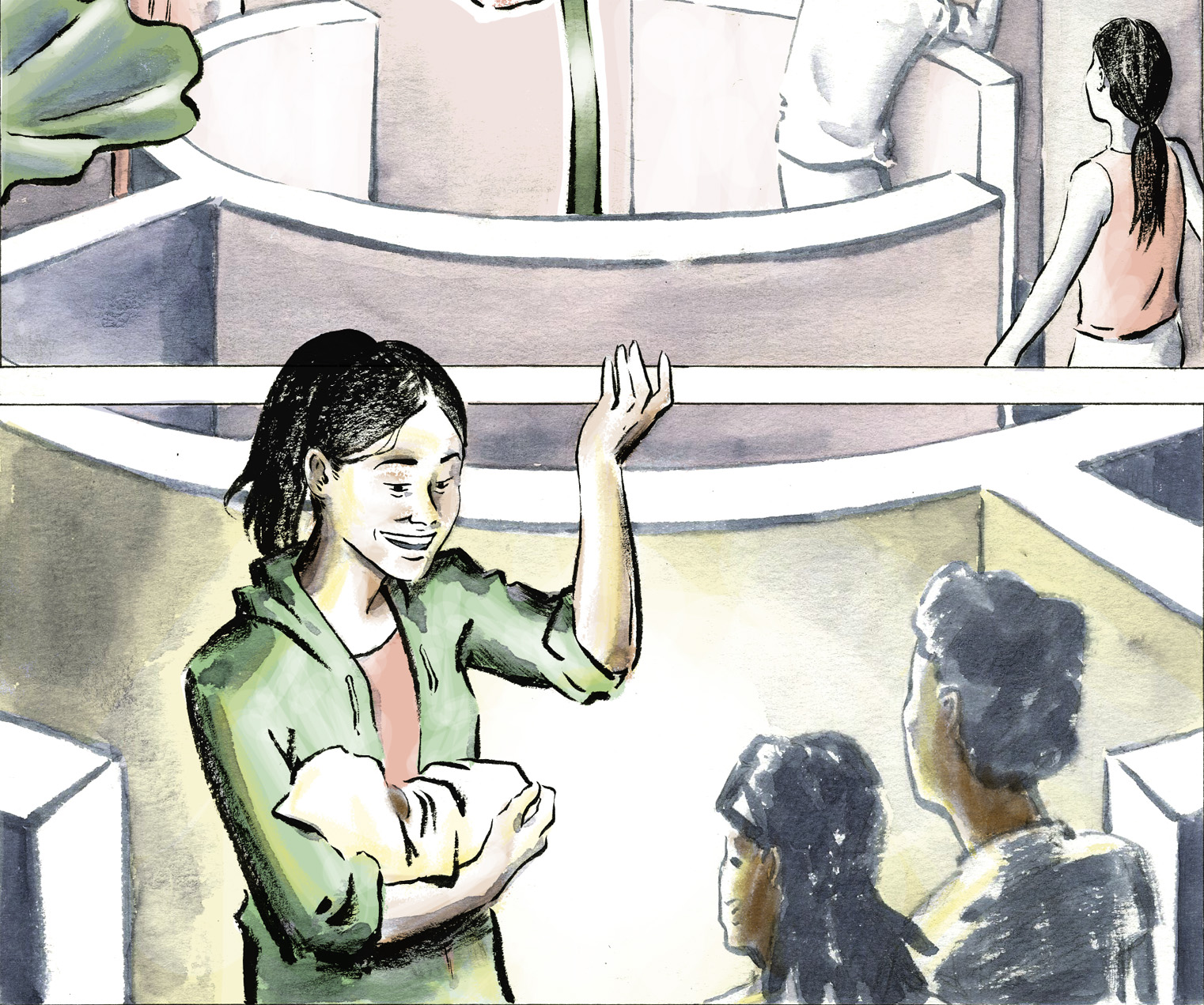
In the next installment, Read about Callie’s efforts to reunite with her birth family, her discovery of more of her story, and her activism on behalf of transnational adoptees in America who are at risk of deportation. A Story of Wholeness — Part Two: What is Gained.

contributors
